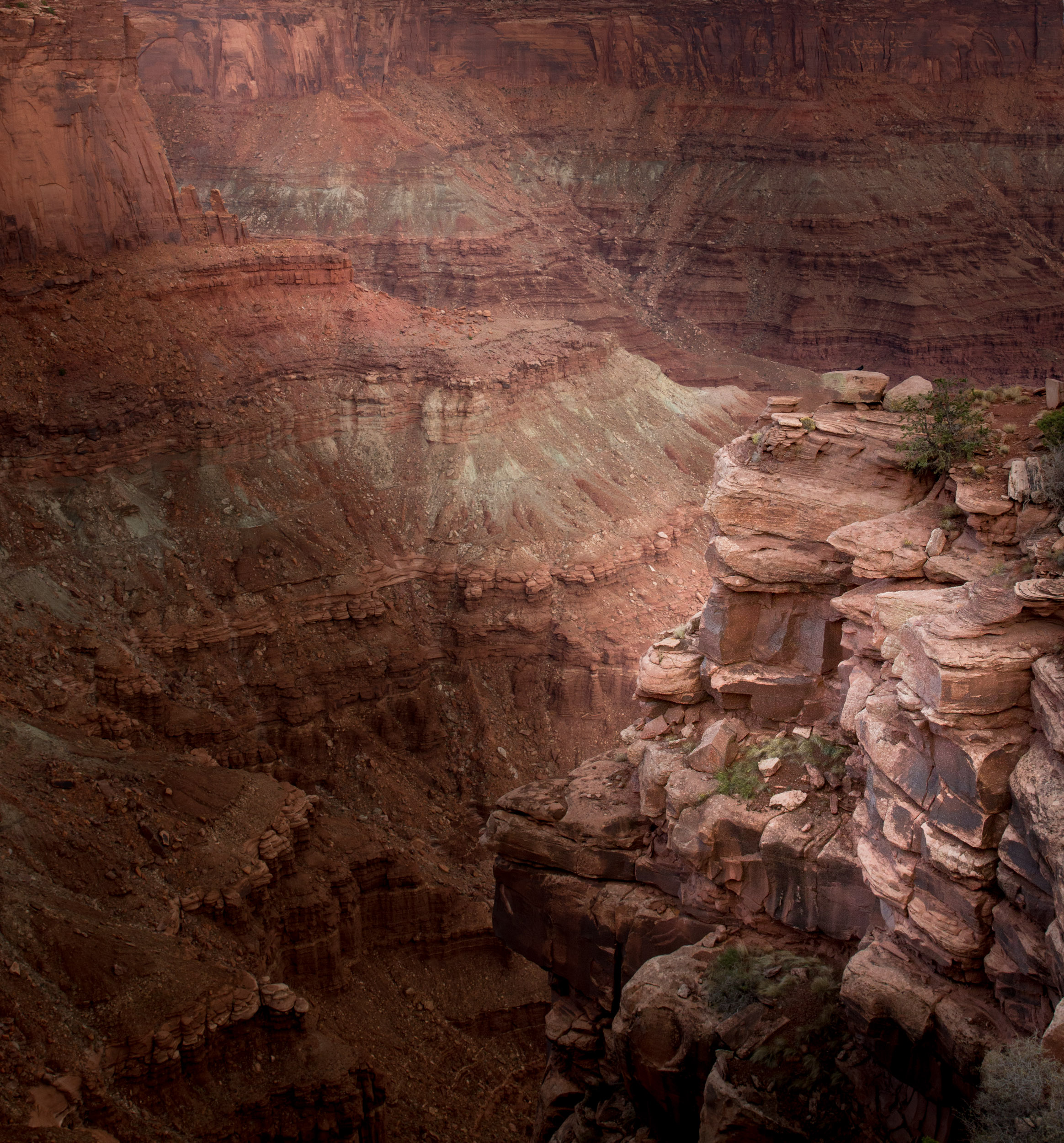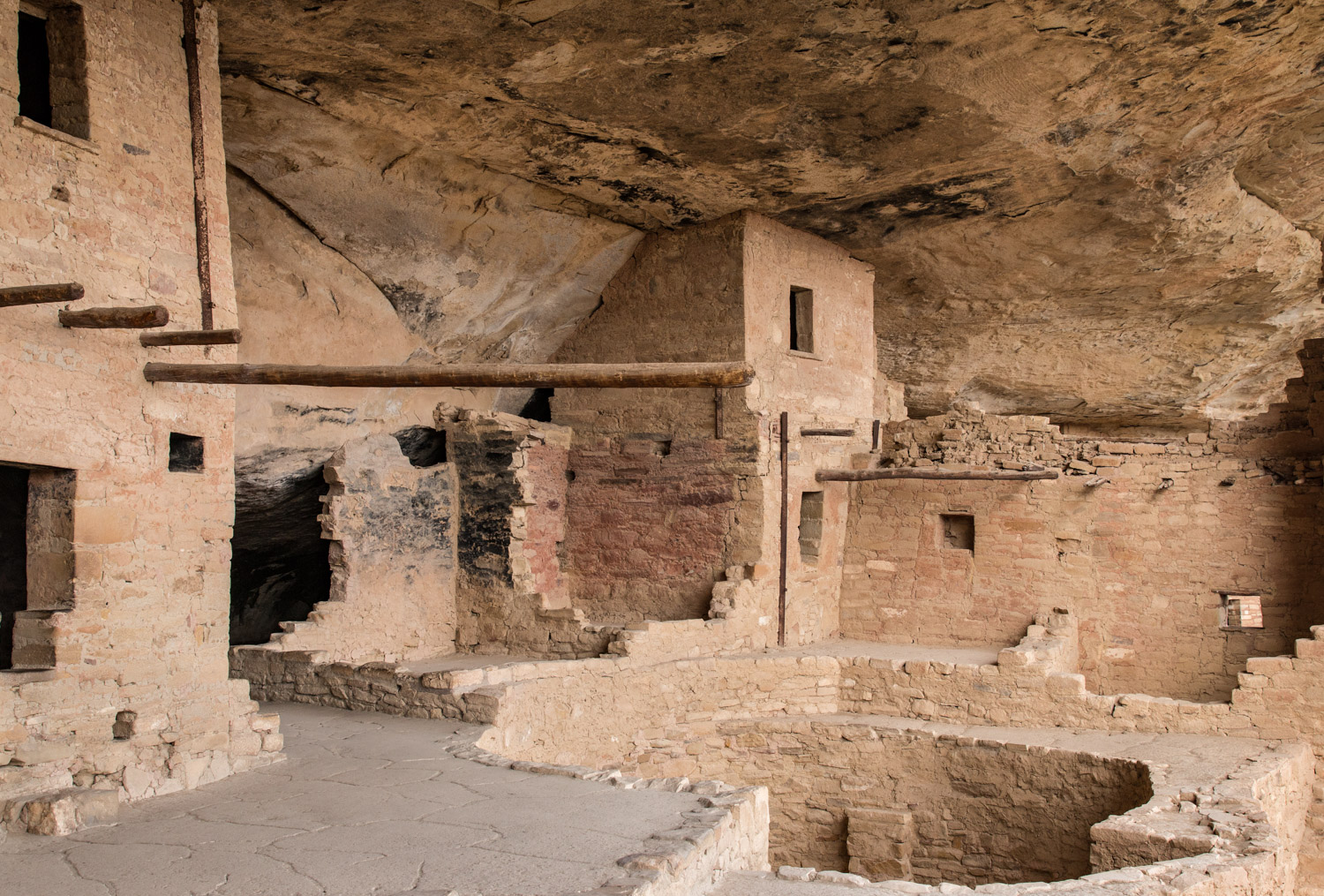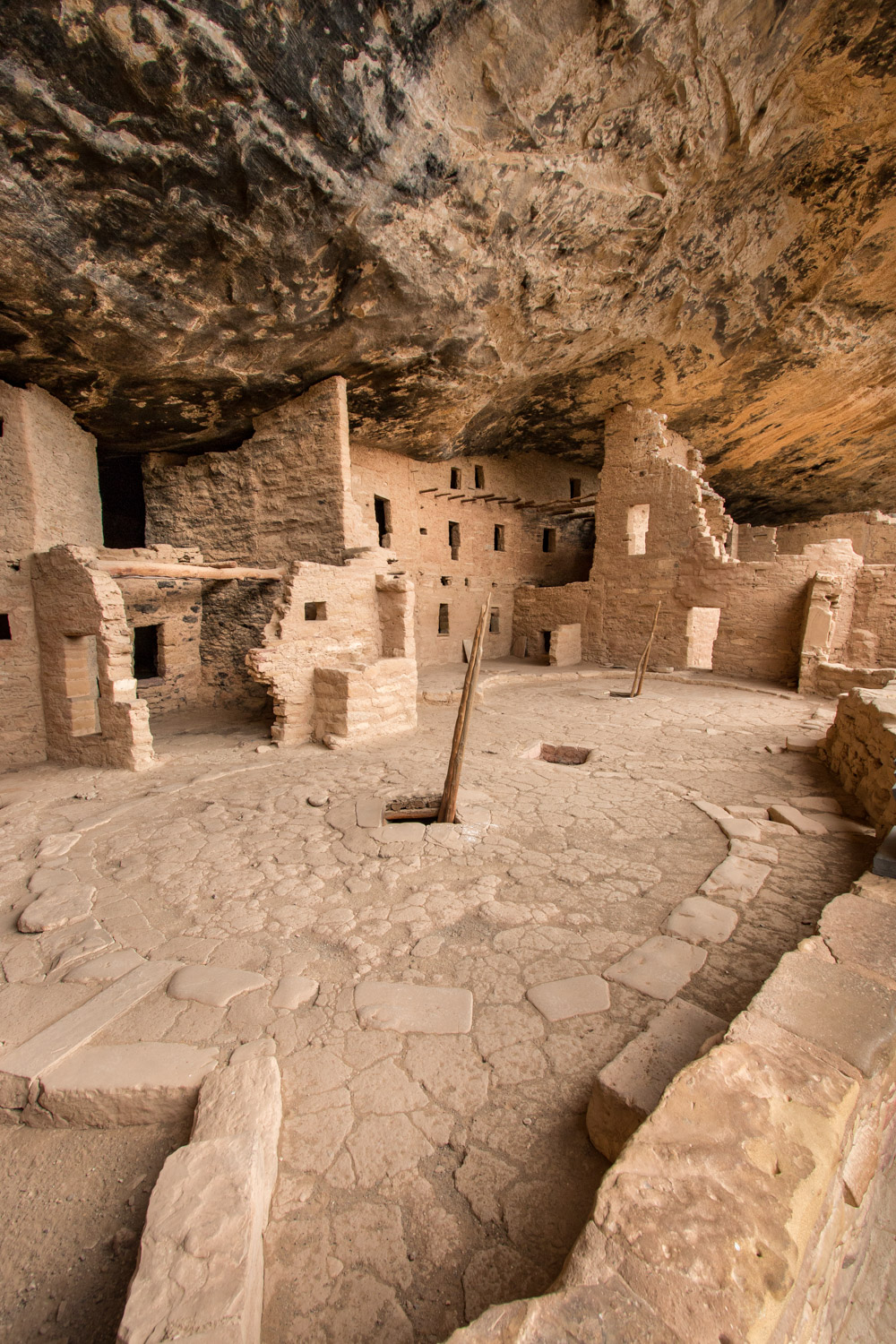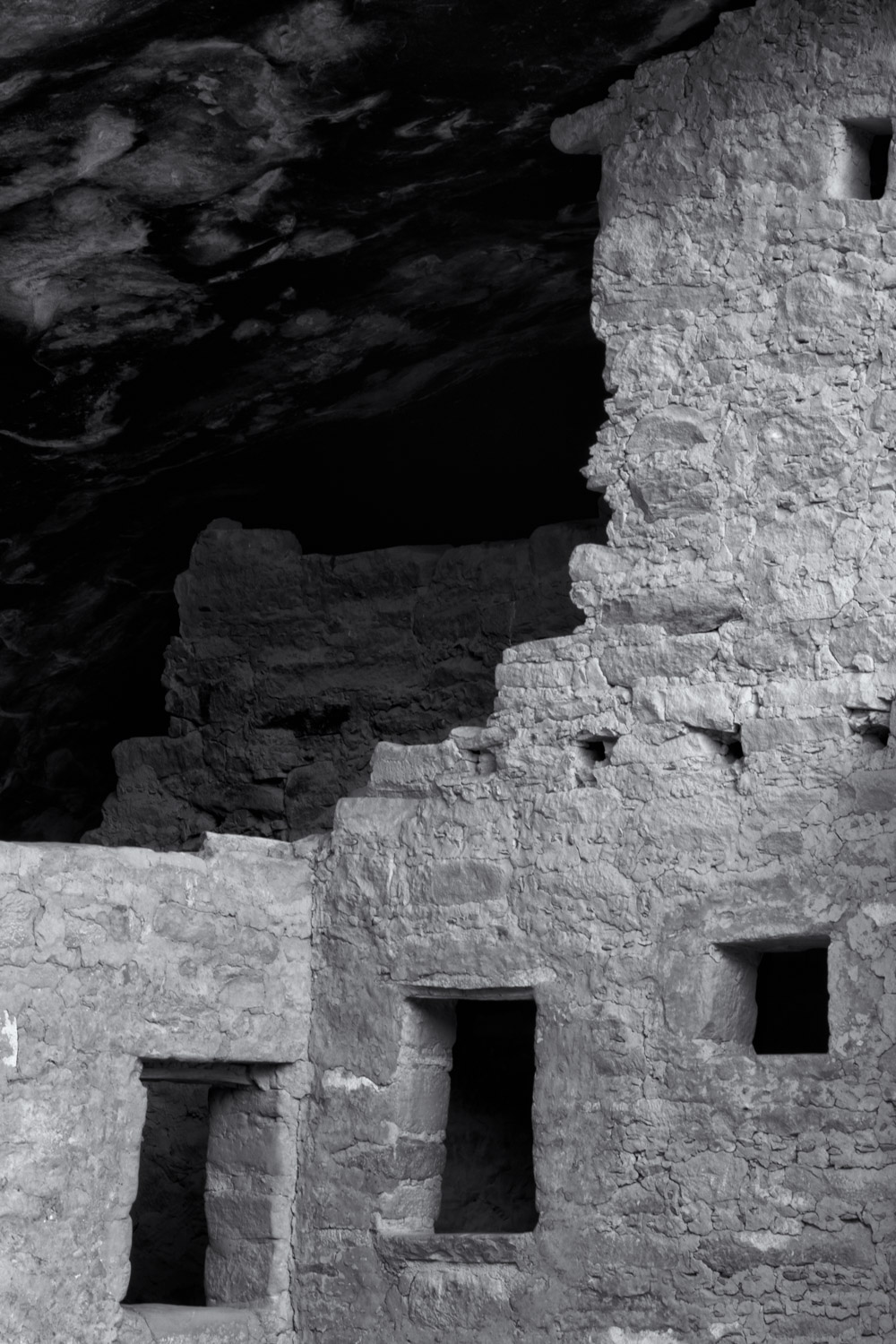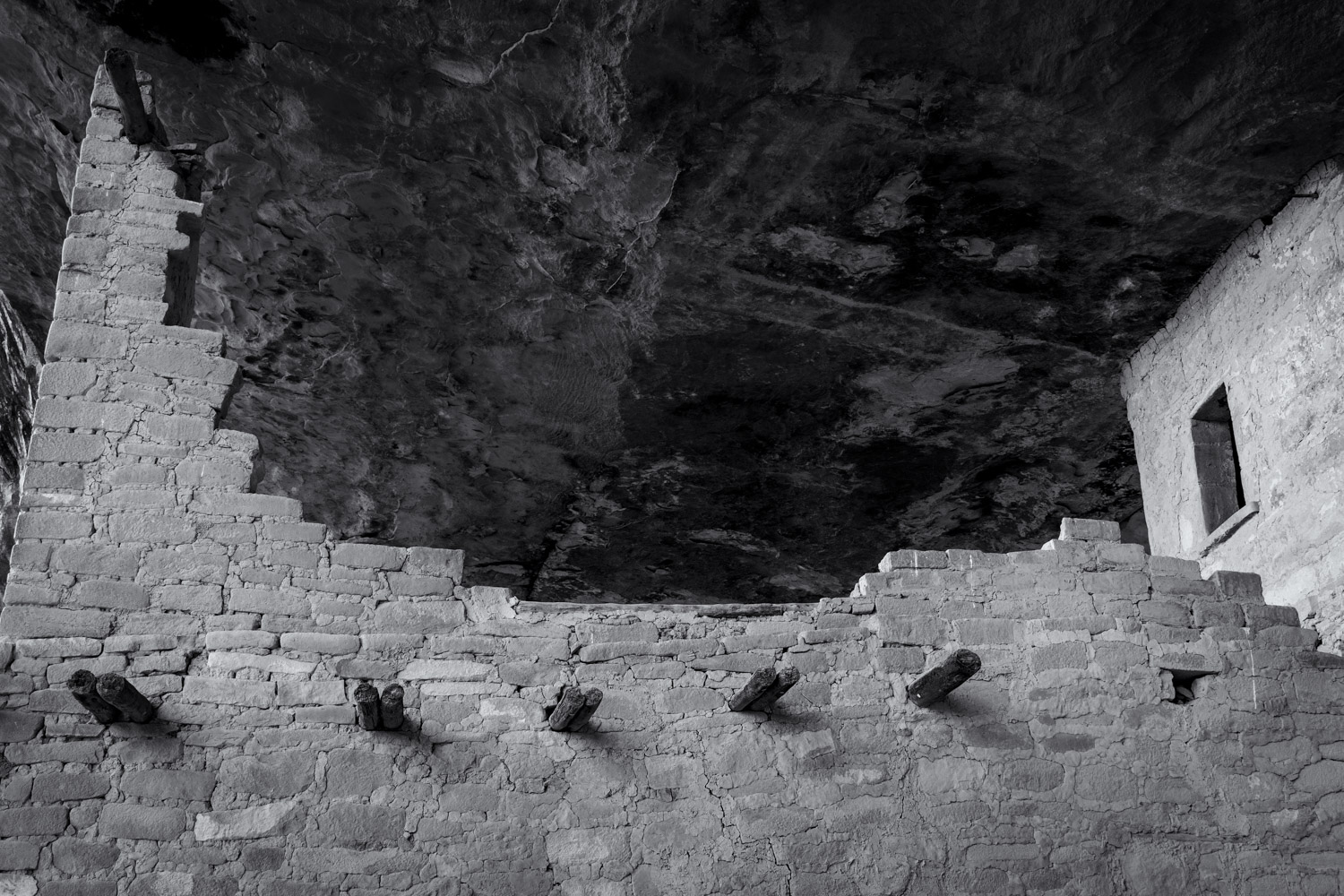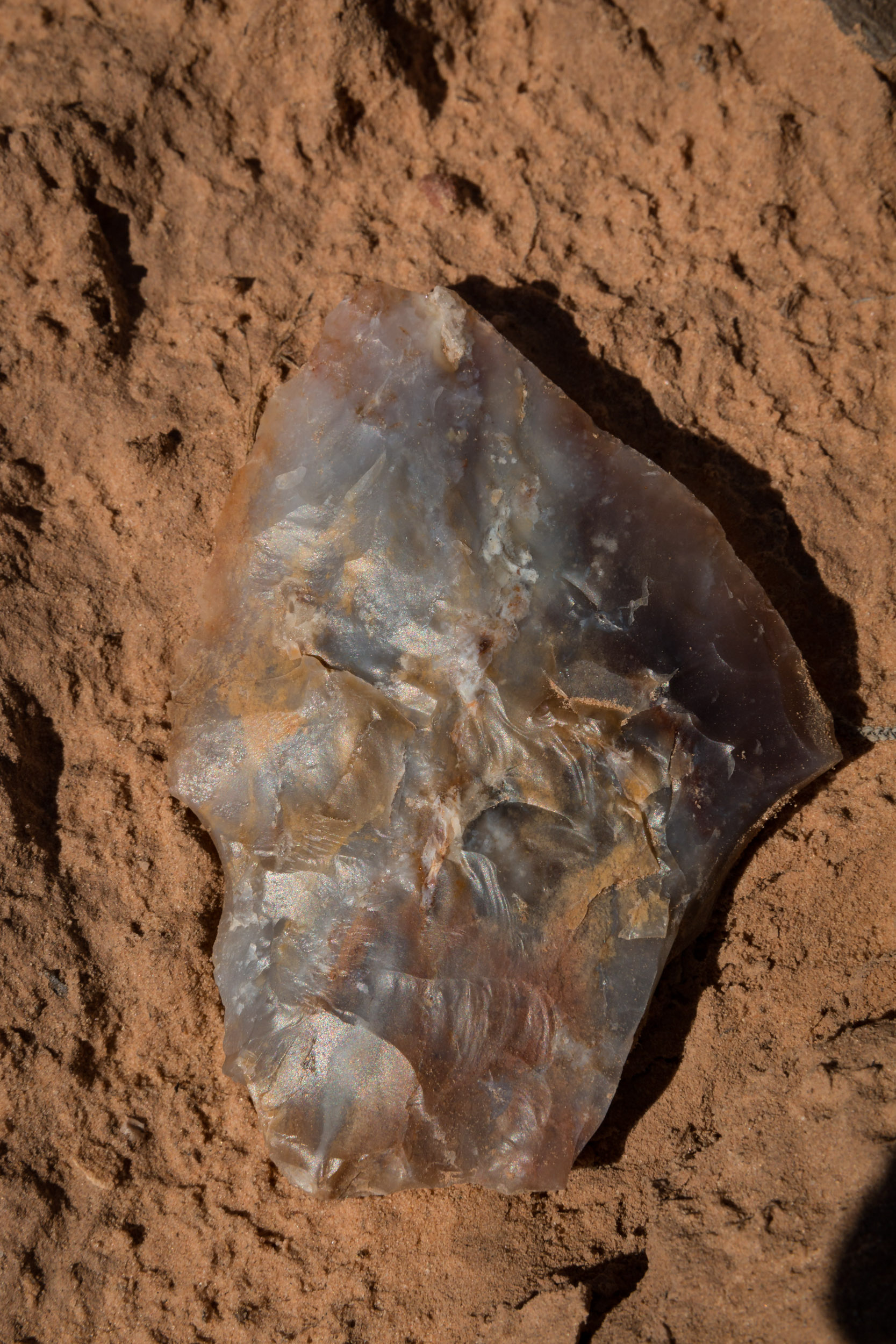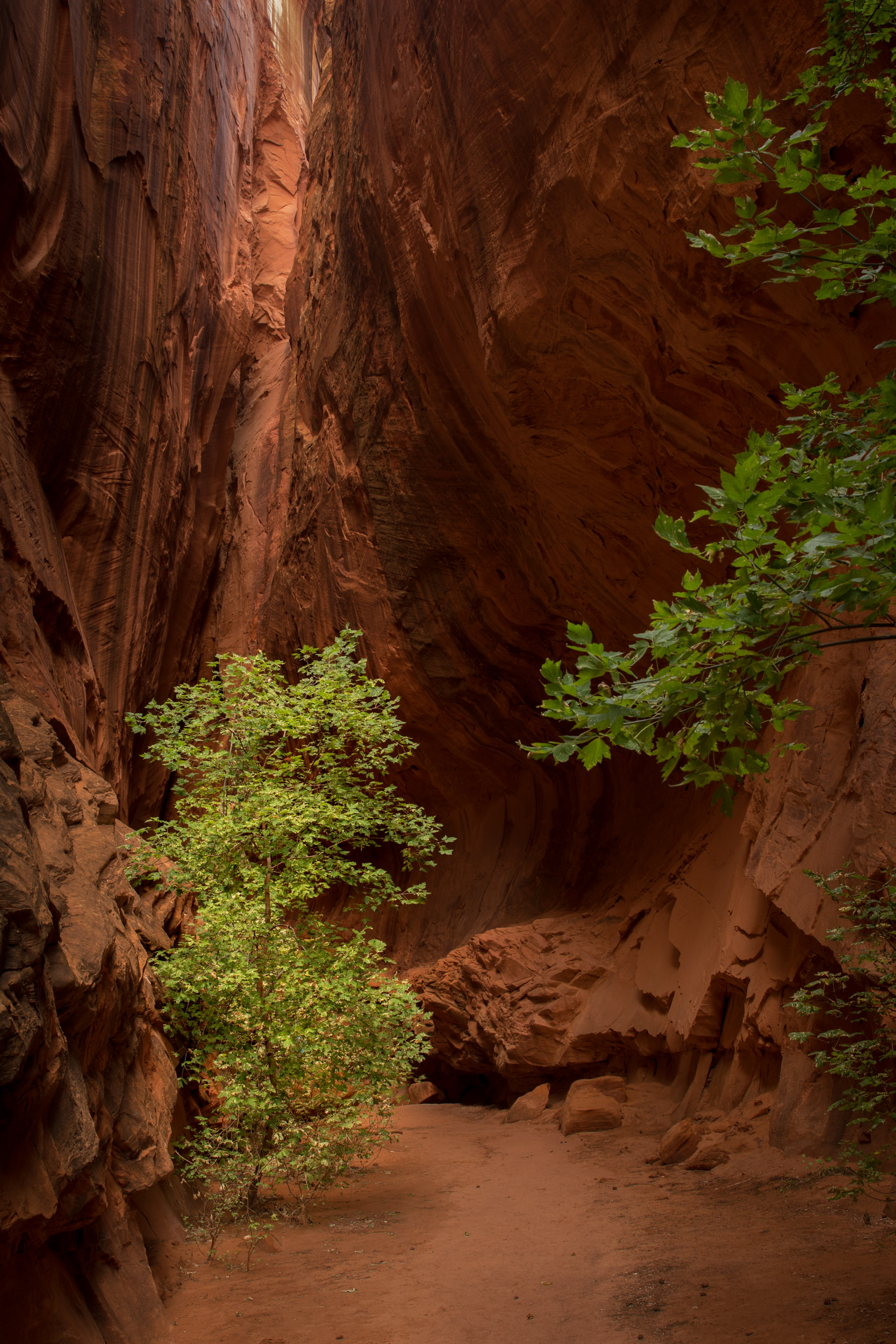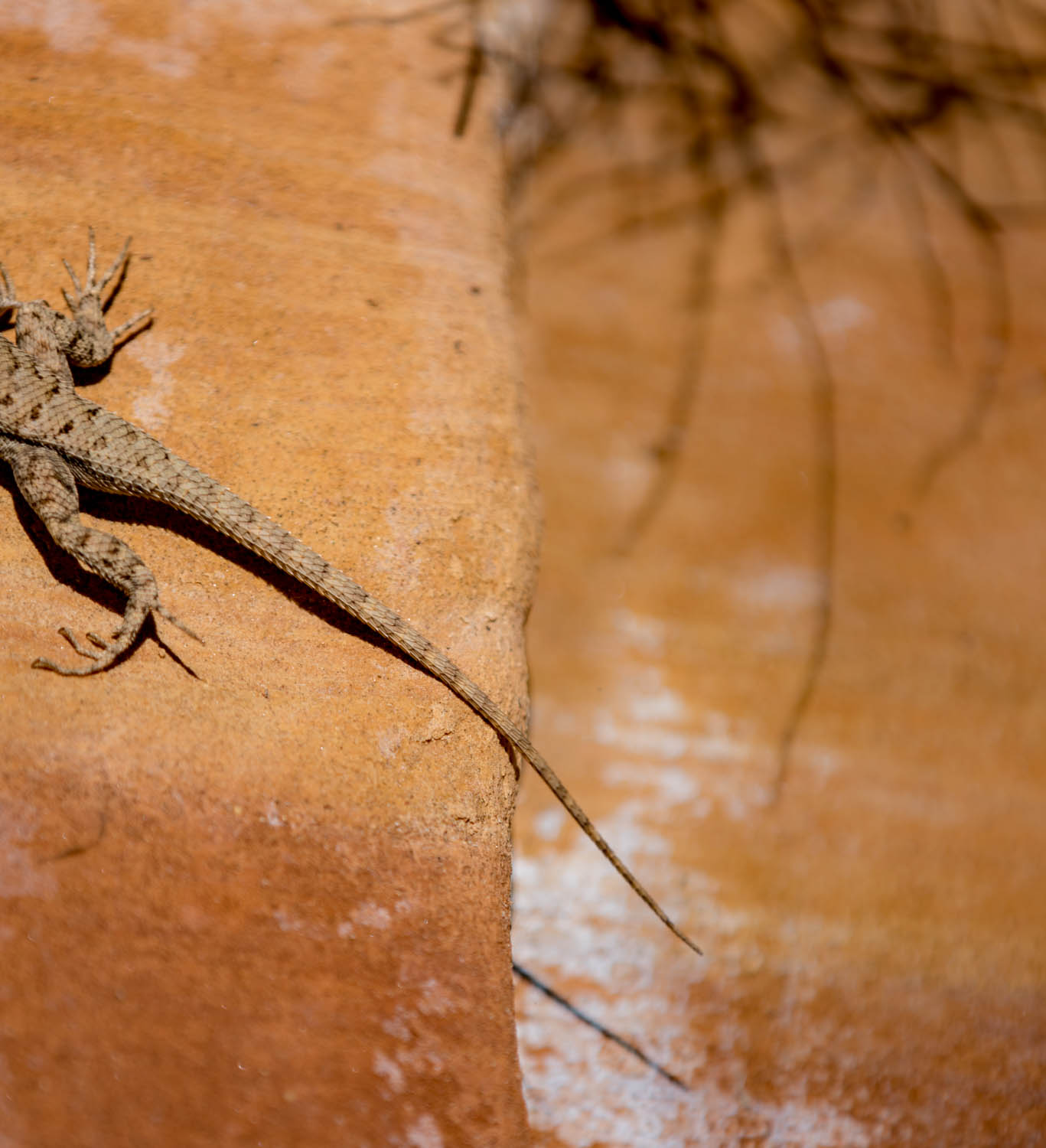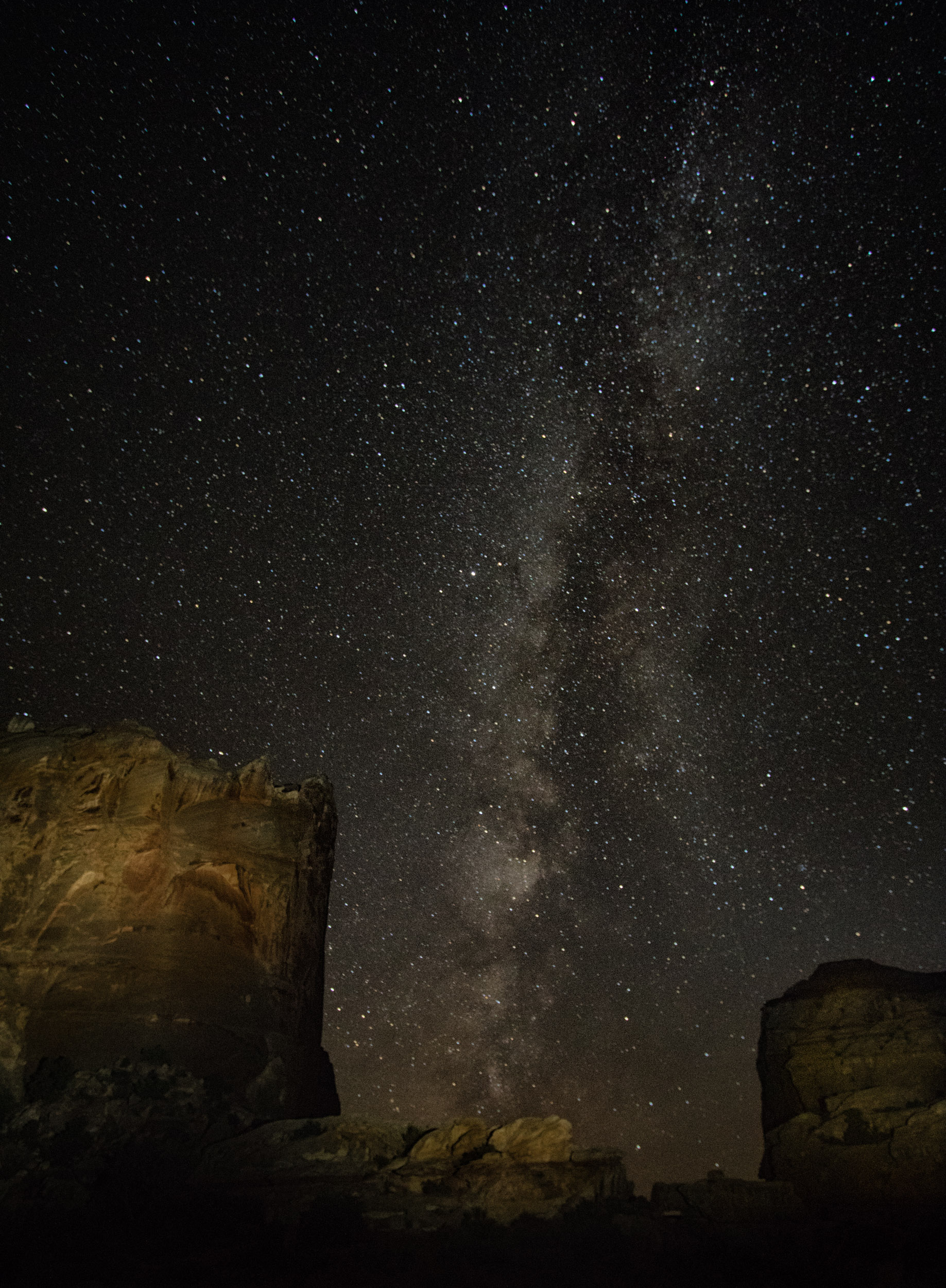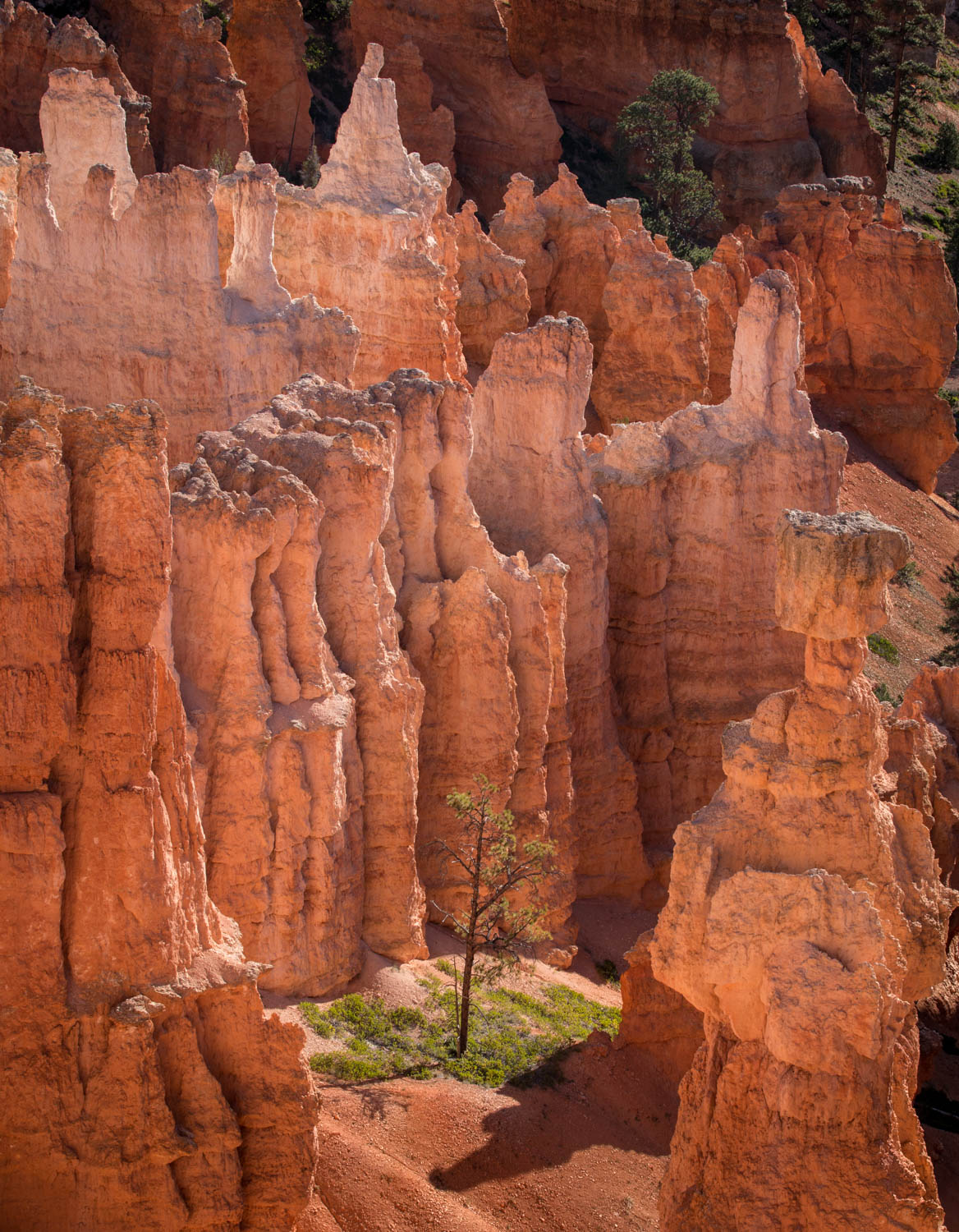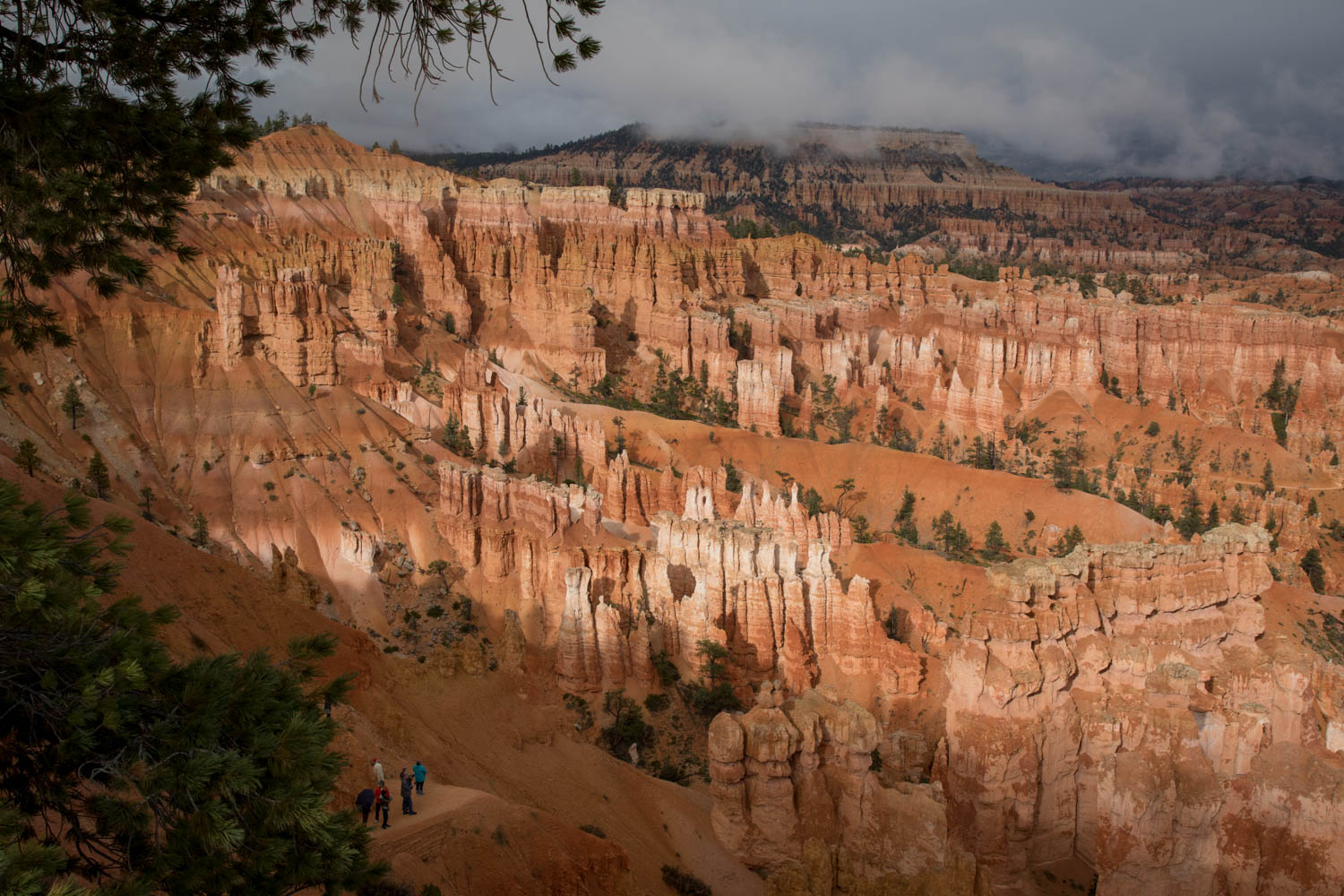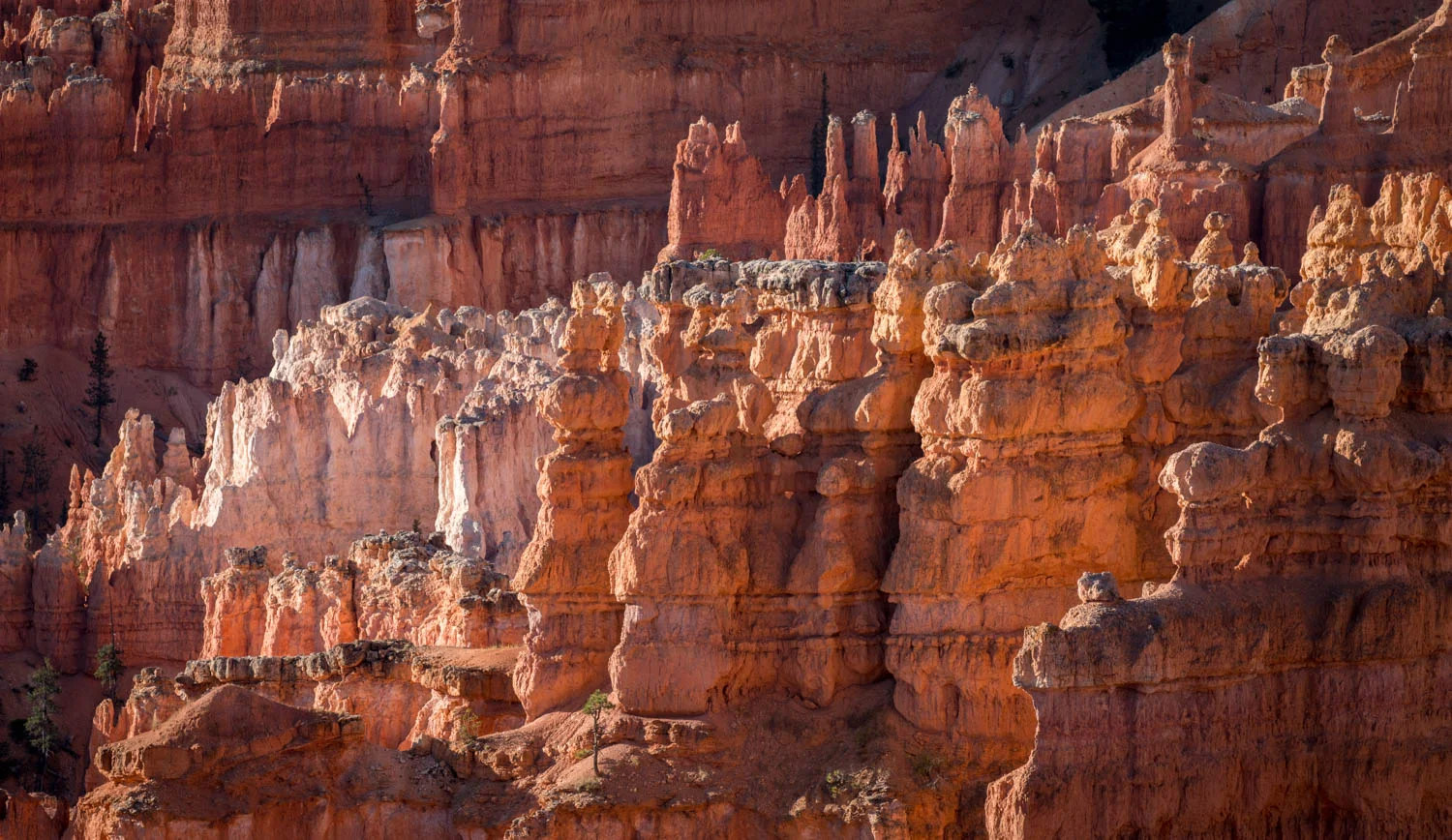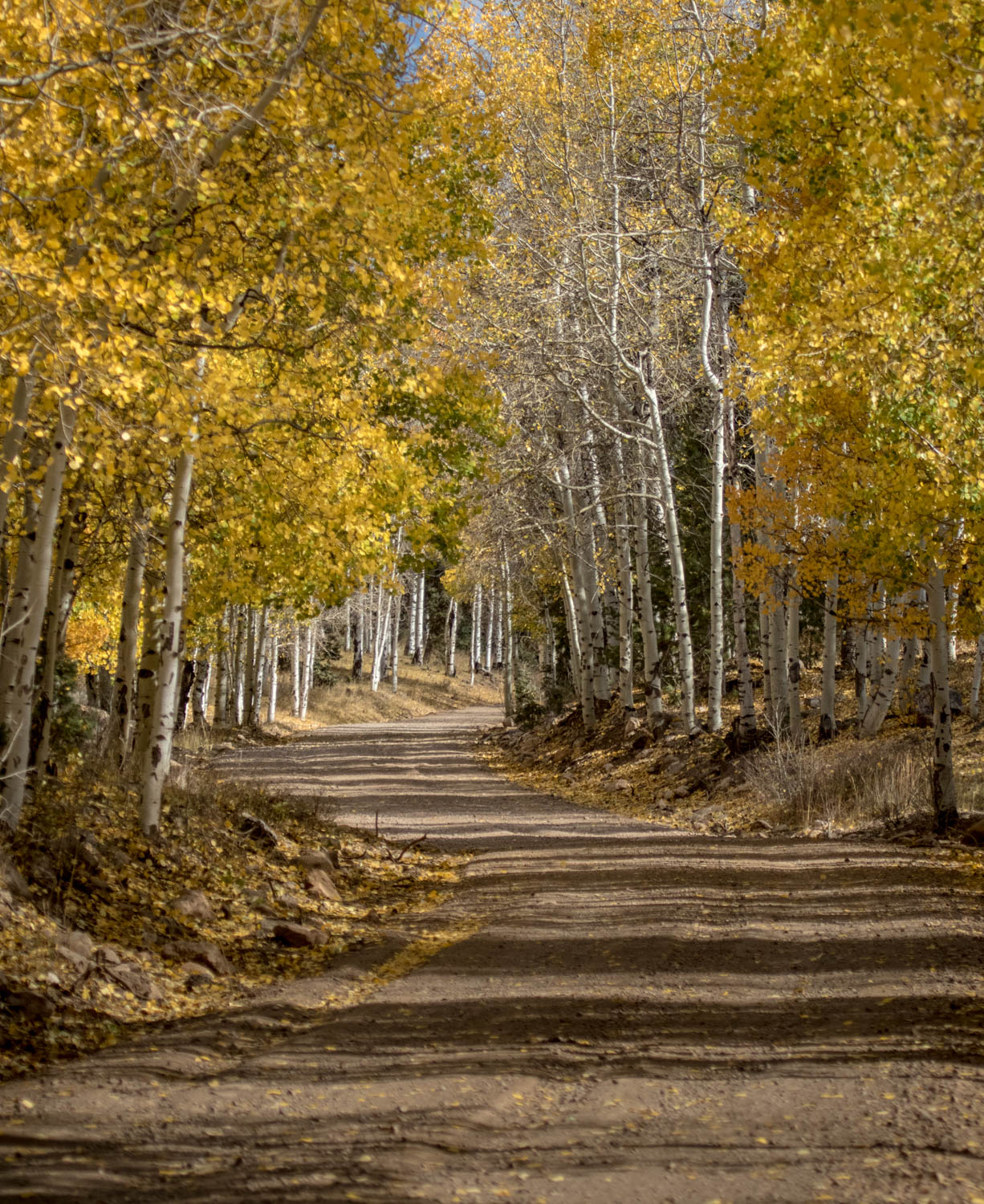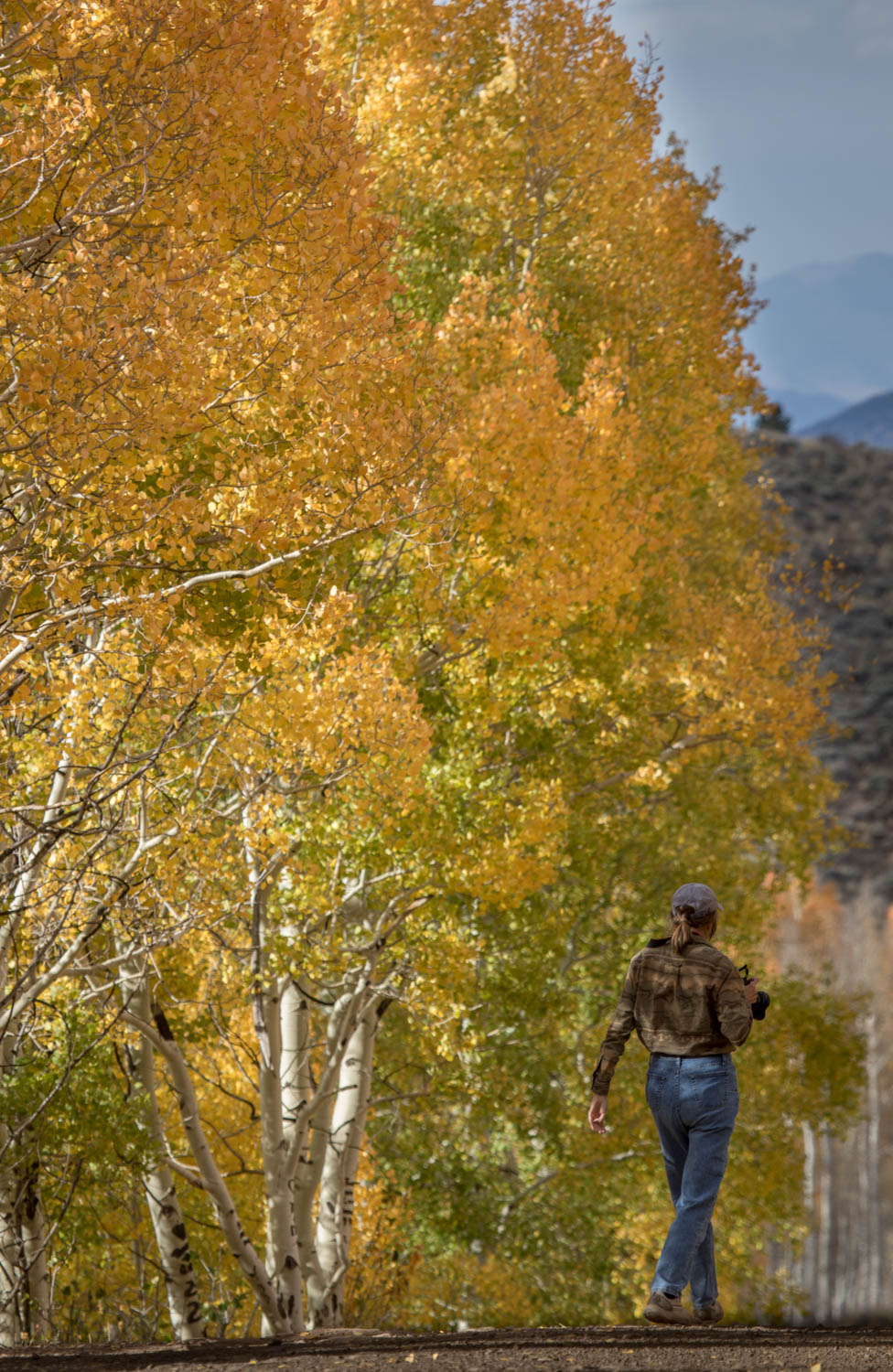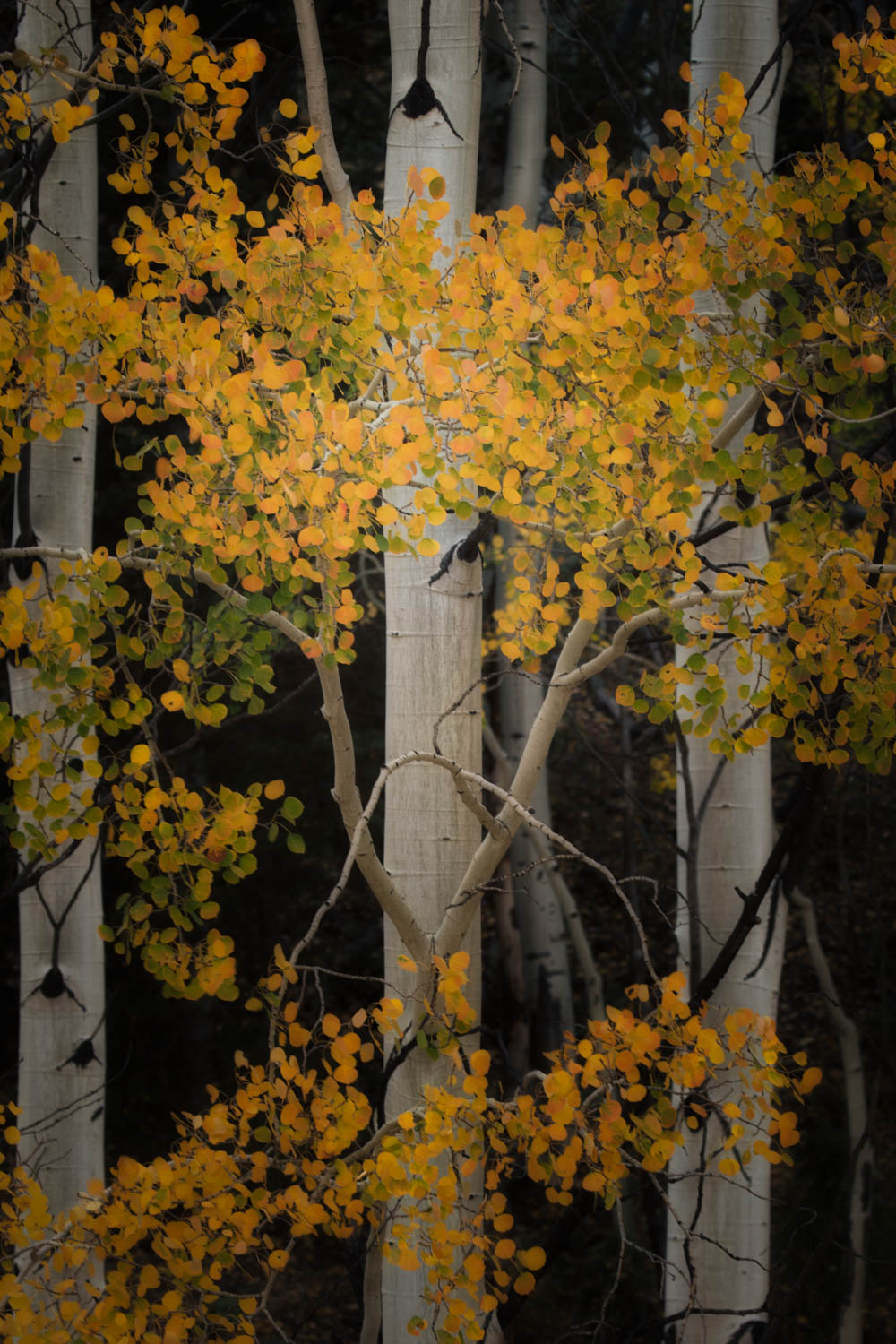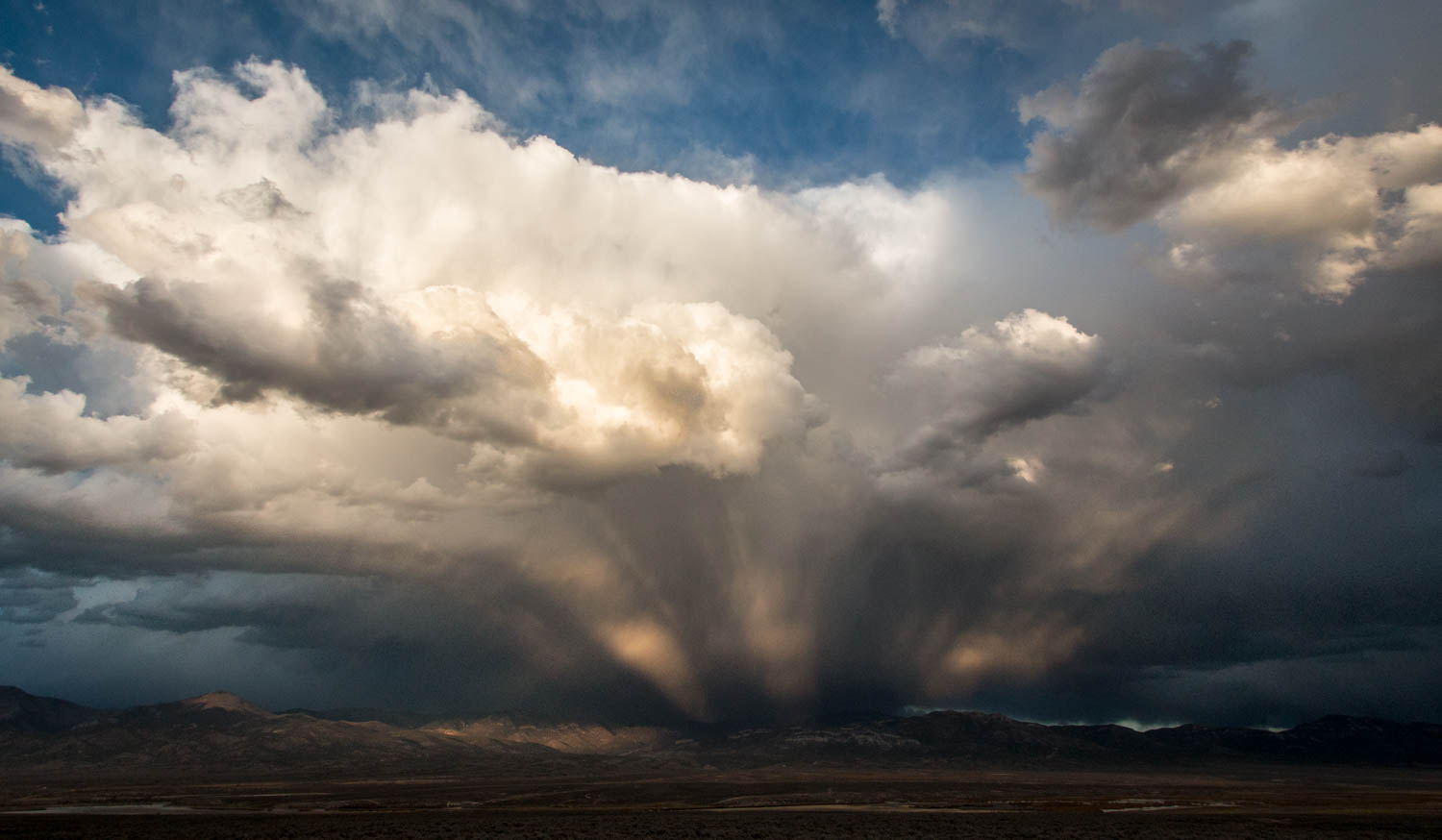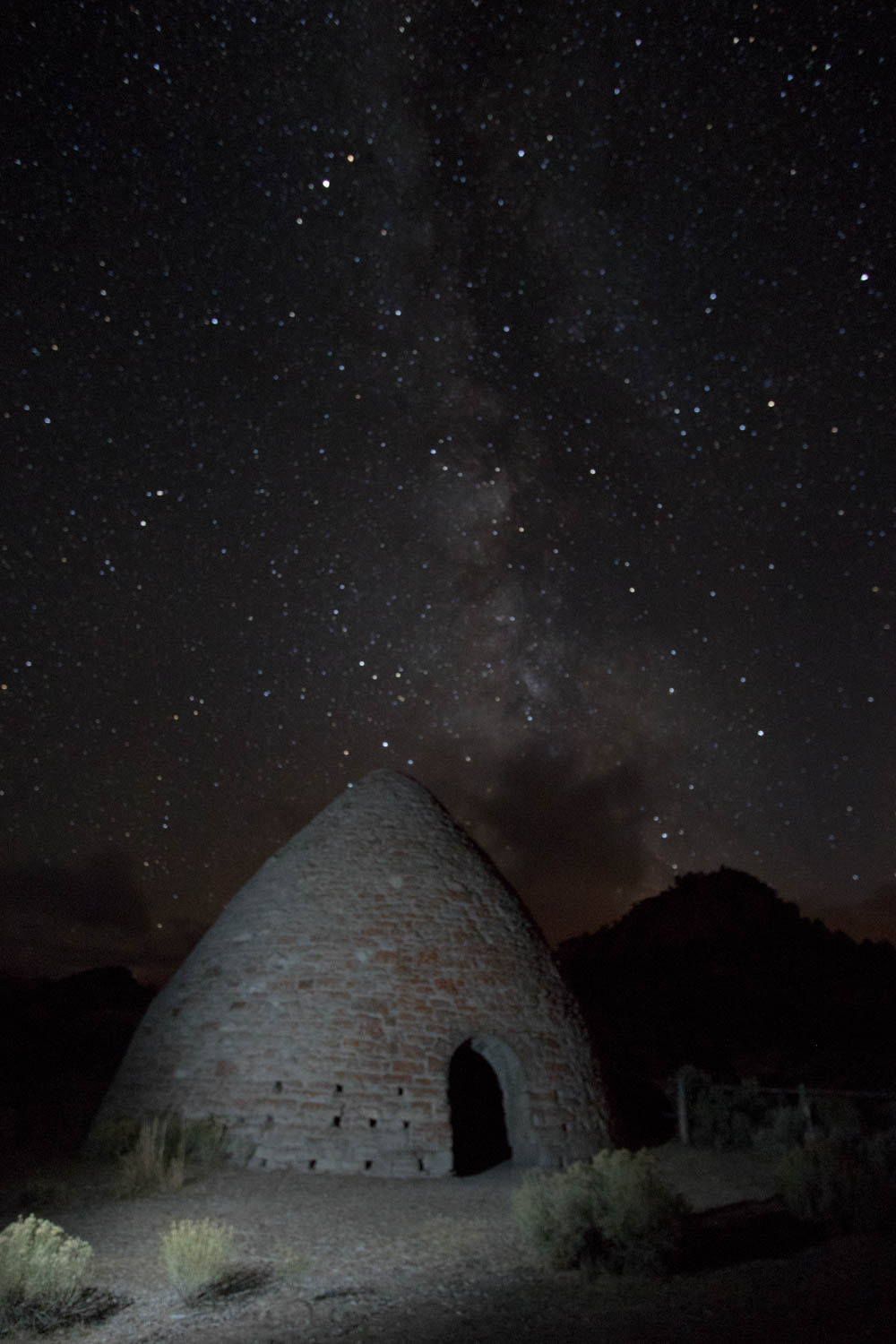This is the eighth in a series of posts about our recent trip to Utah
21.10.2015 Expedition Day 23
Continued overnight cloudiness, rainfall and thunderstorms precluded the morning sunrise imaging tasking. We drove to the prime imaging spot of Dead Horse Point. Visibility was limited to 100 feet or less by dense fog. The Crew then returned to the VC for this park unit. The crew was trained in additional geologic information and in the intricacies of the adjacent KCl (potash) mining operation. Even after our training was complete, dense water vapor mostly obscured the view at the VC. Increased airflow along the cliff walls did result in some clearing and some imaging was accomplished. The Crew again returned to the Point of the deceased equines.
A note here about this local place name. Apparently, the Point area was a capture, sort and cull location used by local cowboys to obtain new equine genetic stock from groups of feral equines. Non-selects were left to expire as there is no surface water (other than small pools of rain water), hence the term Dead Horse Point. Of course this still leaves open the question why the term cowboys. Why not horseboys? Or presumably the work was not that of child laborers and the term horsemen is most appropriate. And since there were apparently multiple non-selects among the feral horse population (named broomtails) why not Dead Horses Point or even Dead Broomtails Point. The Crew is still confused by naming conventions in this area.
As the Crew returned to the observation point at the end of the road, in the area of the deceased, poor genetic quality equine selection area, the water vapor was still not dispersing. The Crew made the decision to transit around the transportation system to the Canyonlands Park unit. The Upheaval Dome foot recon was accomplished. This geologic feature is claimed to be a result of a small meteorite strike. Originally this was thought to have been from a bursting bubble of salt from the underlying salt layers, sort of a geologic zit. The Crew found the meteorite scar theory more heroic. Regardless of source, the trail across “slick rock” sandstone to steep overlooks into the colorful crater was entertaining. Imaging equipment was deployed.
Upheaval Dome detail
Rain pours over the canyon walls near Upheaval Dome
For the evening image tasking we returned to the Grand View Point Overlook at the southern end of this sub-unit’s vehicular transportation system. Imaging equipment was deployed. However, a broken wall of gray, stratified clouds remained in the west restricting lighting to small spots of low brightness in an otherwise moderately shadowed landscape. Lighting was neither colorful nor bold. Imaging results are not expected to be good.
Returning to Collect the Good Equines, Leave the Crummy Equines to Die Point SP more rain showers were encountered and very distant lightning observed. As the planetary satellite is approaching full luminance, stars are becoming difficult to see, additionally high cirrus is obscuring faint stars and astronomical features. Post-sunset imaging is again cancelled.
22.10.2015 Expedition Day 24
Although a transit day, we planned to implement sunrise imaging protocols in the hope of finally catching beneficial lighting. Again, overnight rain left the area covered in overcast and pockets of water vapor. The VC observation point was checked and deemed unsuitable. The Point of the Deceased Broomtails was checked and also found to be unsuitable in dense water vapor. However, a break was noted en route to camp and the First Officer took a limited subset of the imaging equipment and made a quick foray to the canyon edge. He was able to observe some marginally satisfactory lighting conditions and an ephemeral waterfall. However, the Captain assumed the First Officer had exceeded the allotted time for his task and run afoul of poor footing ultimately ending in his untimely demise. After only a few moments the crew reunited. The First Officer thought the Captain somewhat frantic. The Captain was not amused. The First Officer may be in trouble.
As this was a transit day, camp was packed (in a moderate rain) and the Puma Palace and Power Unit “Buzz” departed for the political subdivision of Nevada. In preparation for this leg, the Captain had procured a text on geology visible from most of the route we would be travelling. Reading this book we became familiar with terms such as Laramide orogeny, overthrust, crossbedding, backthrust, splay, dip, bed. We suspect geologic terms were developed by single, frustrated, males.
The Crew made bivouac at the Cathedral Gorge SP in the Nevada political unit. This park is an eroded large water channel near the village of Panaca. Rain showers were observed in the area but not experienced at this site. The Captain deployed imaging equipment to record the colorful cliffs. The First Officer observed the local avifauna. No highly unique species were observed by the First Officer. Also observed were training sorties by Gen4 aerial vehicles (F-16 and F-15). Although the First Officer hoped to observe Gen 5 vehicles (F-22, F-35) none were observed, possibly cloaking devices were deployed. As sunset approached a unique phenomenon was observed as one of the aerial vehicles transited through a cirrus layer. Shock waves from the craft caused the clouds to refract light differently resulting in multi-colored reflections similar to the effect referred to as a “sun dog”. Sunset itself was quite spectacular. Unfortunately, foreground and midground elements were not conducive to fully capturing an aesthetically pleasing image. The Crew strongly wished this sunset had occurred at one of the previous bivouacs.
It is noted ASE Scottie offered Prospective Crew Member Intisar permanent social bonding status. Prospective Crew Member Intisar accepted said offer and has been promoted to Crew Member Specialist (Biological) pending ceremonial confirmation. The crew of the USS Puma Palace congratulate ASE Scott and CMS (B) Intisar on their pending new status. Additionally, we again welcome CMS (B) Intisar to the crew.
23.10.2015 Expedition Day 25
This was a transit day across the political unit of Nevada. The crew transited the Extraterrestrial Highway. No known aliens were observed. We did observe the local bovine race being harassed by a low flying aerial vehicle referred to as a helicopter (specifically a Bell 47G model). Would the individual conducting these flight ops be referred to as a cowpilot or a chopperboy? Probably not a Bellboy as that is a different occupation. We are unsure. Camp was made for the night at the same facility used previously at the community designated RNO. Again, sunset was better than at all locations in the Utah subdivision, Dinner included a local preparation involving raw fish.
Note to crew: No gorging on raw fish prior to days involving long transit periods as the phenomenon referred to locally as “fish farts” is likely to ensue.
24.10.2015 Expedition Day 26
The crew returned to the assigned permanent docking facility. Members of the Sciurid clan greeted us on arrival. Although the Puma Palace is somewhat the worse for wear, at least partially due to previously noted phenomenon, the mission was deemed successful. Maintenance period starts tomorrow.
Log transmission complete. Awaiting further orders.

